Golden Camel
Both milk yields and the nutritional composition of camel milk are affected by many factors
After being introduced to Australia in the 1840s to assist with exploration and trade in the harsh interior before being overtaken by modern communications and transport methods, the feral camel population has grown to in excess of 600,000.Australia's first camel dairies opened in 2014, and the number has been growing ever since, with demand growing both locally and internationally. In 2016 the Australian government reported in 2016 that "the five years to 2021 are expected to see a major increase in Australian camel milk production". Production has grown from 50,000 litres (11,000 imp gal) of camel milk in 2016 to 180,000 litres (40,000 imp gal) per annum in 2019. One farm has grown from three wild camels in 2014 to over 300 in 2019, and exports mostly to Singapore, with shipments of both fresh and powdered product set to start to Thailand and Malaysia.[8]
One litre of pasteurised camel milk retailed for about A$15 (US$10; £8) in Australia in 2019, which was about 12 times more expensive than cow's milk.[8] As of April 2020, Australia has seven camel dairies, which produce meat and skincare products in addition to milk and cheese.[9] There was one certified organic commercial camel milk dairy in 2019.[8]
As of 2014 the United States had an imported population of 5,000 camels. The cost of producing camel's milk is considerably higher than that of producing cow's milk. In the United States, female camels are very rare; they mature slowly and can be bred safely only after age four. Their thirteen-month gestation period must conclude in a live birth followed by suckling, else the female camel will stop producing milk. Unlike a dairy cow which is parted from her calf when it is born and then gives milk for six to nine months, a camel can share her milk with the farmer and her calf for 12–18 months.
Why does the Golden Camel Group exist?


Yang Jie
Chairman of the Goldehn Camel Group
According to the United States Food and Drug Administration (FDA), camel milk contains 3% fat.[13] However, it is reported in the literature that the proportion of fat in the milk varies from country to country and region to region, and is also dependent upon diet, level of hydration of the animal, and type of camel. In a detailed report published by the Food and Agriculture Organization of the United Nations in 1982, a table shows fat content varying from as low as 1.1% (in arid areas of Israel) to 5.5% (Ethiopia).[14] A 2015 systematic review reports the fat content of dromedary milk as between 1.2% and 6.4%.[15]
Camel farmers may provide a degree of control over factors affecting the nutritional content of the milk produced by their camels. Producers of camel milk in Australia state that their products have lower fat and lactose than cow's milk.
Add Your Heading Text Here
Camel milk can readily be made into yogurt, but can only be made into butter if it is soured first, churned, and a clarifying agent is then added.[4] As a beverage, camel milk tastes similar to cow's milk, but slightly saltier.[18]
Cheese from camel milk is more difficult to make than cheese from the milk of other dairy animals.[19] In camel-herding communities, camel milk cheeses use spontaneous fermentation or lactic fermentation to achieve a sour curd; in camel farming in Sudan, the Rashaida tribe use this method to store surplus milk in the rainy season, pulverising the dried curds and adding water for consumption in the dry season, and in Mongolia, camel milk is consumed as a product at various stages of the curd-making process.[citation needed] However, the milk does not coagulate easily and bovine rennet fails to coagulate the milk effectively.[20] Developing less wasteful uses of the milk, the FAO commissioned Professor J.P. Ramet of the École Nationale Supérieure d'Agronomie et des Industries Alimentaires (ENSAIA), who was able to produce curdling by the addition of calcium phosphate and vegetable rennet in the 1990s.[21] The cheese produced from this process has low levels of cholesterol and is easy to digest, even for the lactose intolerant.[22][23] The European-style cheese, marketed under the name Caravane, was created through collaboration between Mauritanian camel milk dairy Tiviski, the FAO, and Ramet. It is claimed to be the only camel milk cheese in the world.[24]
Camel milk can also be made into ice cream.[25][26]
Fermented camel milk products include chal or shubat in Central Asia and Iran,[27] khoormog in Mongolia, garris in Sudan, suusac in Kenya, leben (lben) in Arab countries, and ititu and dhanaan in Ethiopia. Other traditional fermented beverages based on a mixture of camel milk and water are available in Mauritania known as zrig, in Morocco known as lfrik.[28]
Add Your Heading Text Here
Camel milk can readily be made into yogurt, but can only be made into butter if it is soured first, churned, and a clarifying agent is then added.[4] As a beverage, camel milk tastes similar to cow's milk, but slightly saltier.[18]
Cheese from camel milk is more difficult to make than cheese from the milk of other dairy animals.[19] In camel-herding communities, camel milk cheeses use spontaneous fermentation or lactic fermentation to achieve a sour curd; in camel farming in Sudan, the Rashaida tribe use this method to store surplus milk in the rainy season, pulverising the dried curds and adding water for consumption in the dry season, and in Mongolia, camel milk is consumed as a product at various stages of the curd-making process.[citation needed] However, the milk does not coagulate easily and bovine rennet fails to coagulate the milk effectively.[20] Developing less wasteful uses of the milk, the FAO commissioned Professor J.P. Ramet of the École Nationale Supérieure d'Agronomie et des Industries Alimentaires (ENSAIA), who was able to produce curdling by the addition of calcium phosphate and vegetable rennet in the 1990s.[21] The cheese produced from this process has low levels of cholesterol and is easy to digest, even for the lactose intolerant.[22][23] The European-style cheese, marketed under the name Caravane, was created through collaboration between Mauritanian camel milk dairy Tiviski, the FAO, and Ramet. It is claimed to be the only camel milk cheese in the world.[24]
Camel milk can also be made into ice cream.[25][26]
Fermented camel milk products include chal or shubat in Central Asia and Iran,[27] khoormog in Mongolia, garris in Sudan, suusac in Kenya, leben (lben) in Arab countries, and ititu and dhanaan in Ethiopia. Other traditional fermented beverages based on a mixture of camel milk and water are available in Mauritania known as zrig, in Morocco known as lfrik.[28]
Add Your Heading Text Here
Camel milk can readily be made into yogurt, but can only be made into butter if it is soured first, churned, and a clarifying agent is then added.[4] As a beverage, camel milk tastes similar to cow's milk, but slightly saltier.[18]
Cheese from camel milk is more difficult to make than cheese from the milk of other dairy animals.[19] In camel-herding communities, camel milk cheeses use spontaneous fermentation or lactic fermentation to achieve a sour curd; in camel farming in Sudan, the Rashaida tribe use this method to store surplus milk in the rainy season, pulverising the dried curds and adding water for consumption in the dry season, and in Mongolia, camel milk is consumed as a product at various stages of the curd-making process.[citation needed] However, the milk does not coagulate easily and bovine rennet fails to coagulate the milk effectively.[20] Developing less wasteful uses of the milk, the FAO commissioned Professor J.P. Ramet of the École Nationale Supérieure d'Agronomie et des Industries Alimentaires (ENSAIA), who was able to produce curdling by the addition of calcium phosphate and vegetable rennet in the 1990s.[21] The cheese produced from this process has low levels of cholesterol and is easy to digest, even for the lactose intolerant.[22][23] The European-style cheese, marketed under the name Caravane, was created through collaboration between Mauritanian camel milk dairy Tiviski, the FAO, and Ramet. It is claimed to be the only camel milk cheese in the world.[24]
Camel milk can also be made into ice cream.[25][26]
Fermented camel milk products include chal or shubat in Central Asia and Iran,[27] khoormog in Mongolia, garris in Sudan, suusac in Kenya, leben (lben) in Arab countries, and ititu and dhanaan in Ethiopia. Other traditional fermented beverages based on a mixture of camel milk and water are available in Mauritania known as zrig, in Morocco known as lfrik.[28]
Kazakhstan
Natural Pasture
The peak lactation season for camels runs from September to the following April. Since this period follows the rainy seasons, Kazak pastures contain higher dry matter content, resulting in camel milk with richer fat content and higher nutrient levels. In China. Xinjiang and inner Mongolia are located at high altitudes, causing domestic camels to cease milk production during winter, which should otherwise be their peak lactation season. Consequently only lower-quality milk produced outside the peak season can be processed into products. Kazakhstan adopts natural grazing practices, allowing camels to consume more natural thorn-like plants that enhance their natural detoxification factors and insulin-like substances. in contrast. most domestic pastures use pen-raising methods where thorn-like plants constitute a small portion of the camels' diet. To achieve high nutrient retention in dairy products, many domestic farms feed camels industrial salt, a practice that does not occur in Ka- zakhstan's saline pastures.
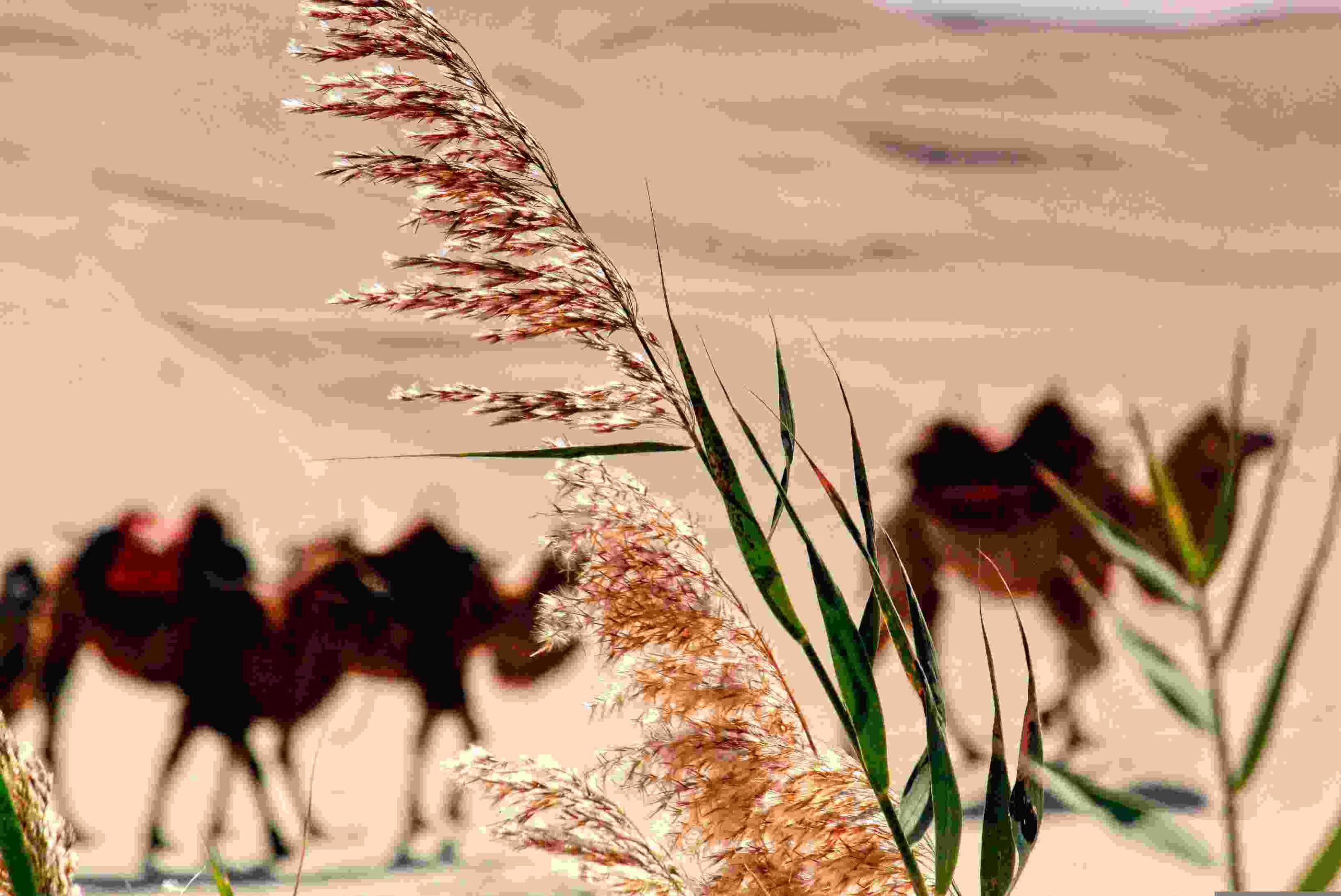
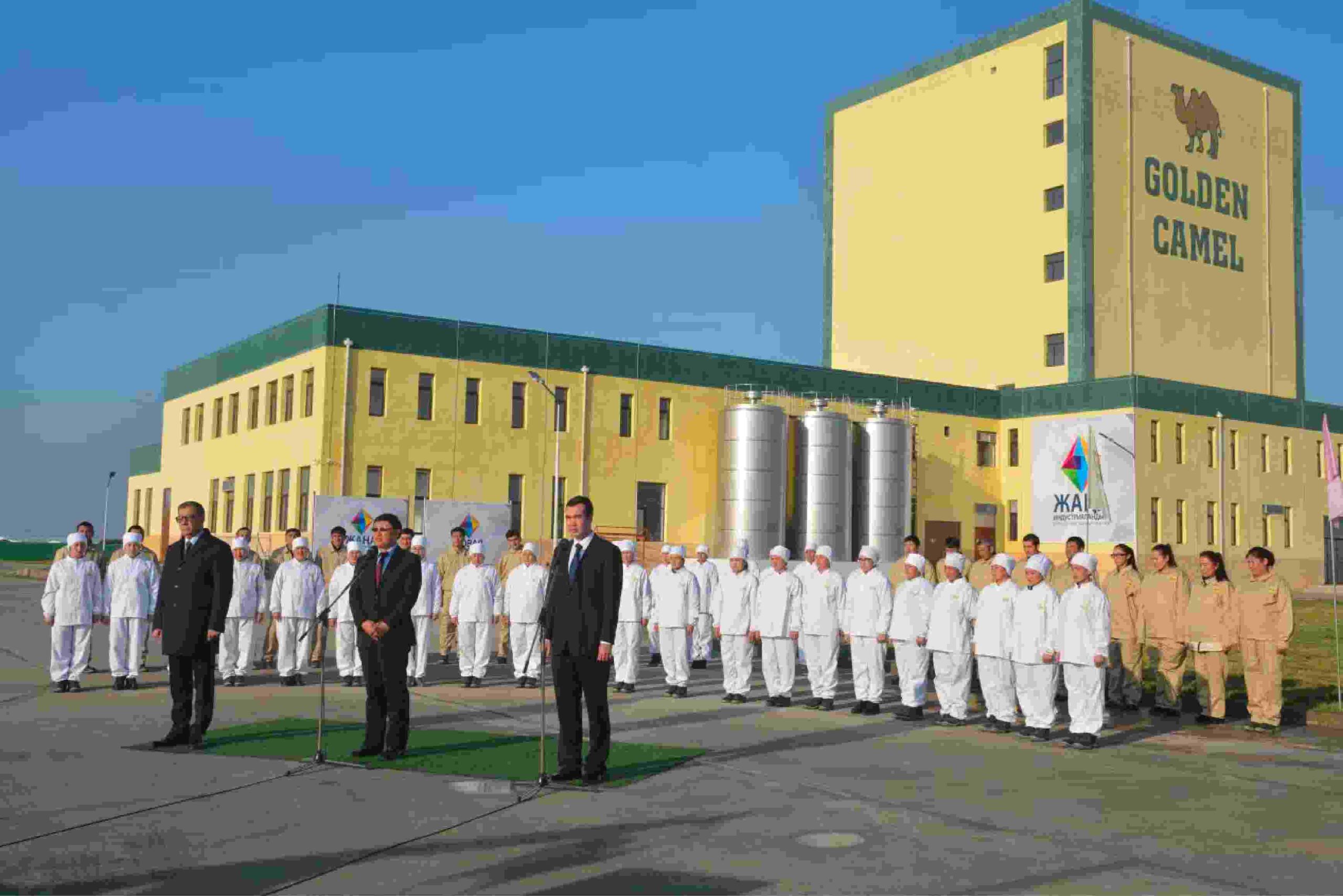
Factory
Established in 2018,Kazakhstan Golden Camel Group is one of the 55 capacity cooperation projects between China and Kazakhstan. In the nearly decade since its establishment, Golden Came! has become a global leader in the camel milk production in. dustry with 1.3 million camel milk sources, 20 standardized milk collection stations, and a daily processing capacity ex- ceeding 120 tons of fresh camel milk. The company's prod- ucts are exported to China, Russia, Germany, Egypt, and other countries.
Brand Credentials
















7 participationsin the China International ImportExo
in the China International Import Expo
The Kazakhstan National Pavilion at the China International
Import Expo (CllE) showcased its tribute-themed brands in
seven consecutive editions from 2018 to 2024.
Kazakhstan's Premier National Gift Honored at
the 1st China International lmport Expo (ClE)
The exquisite quality and rich, mellow flavor of Golden
Camel Whole Camel Milk Powder have earned unanimous
praise from friends in China and around the world!
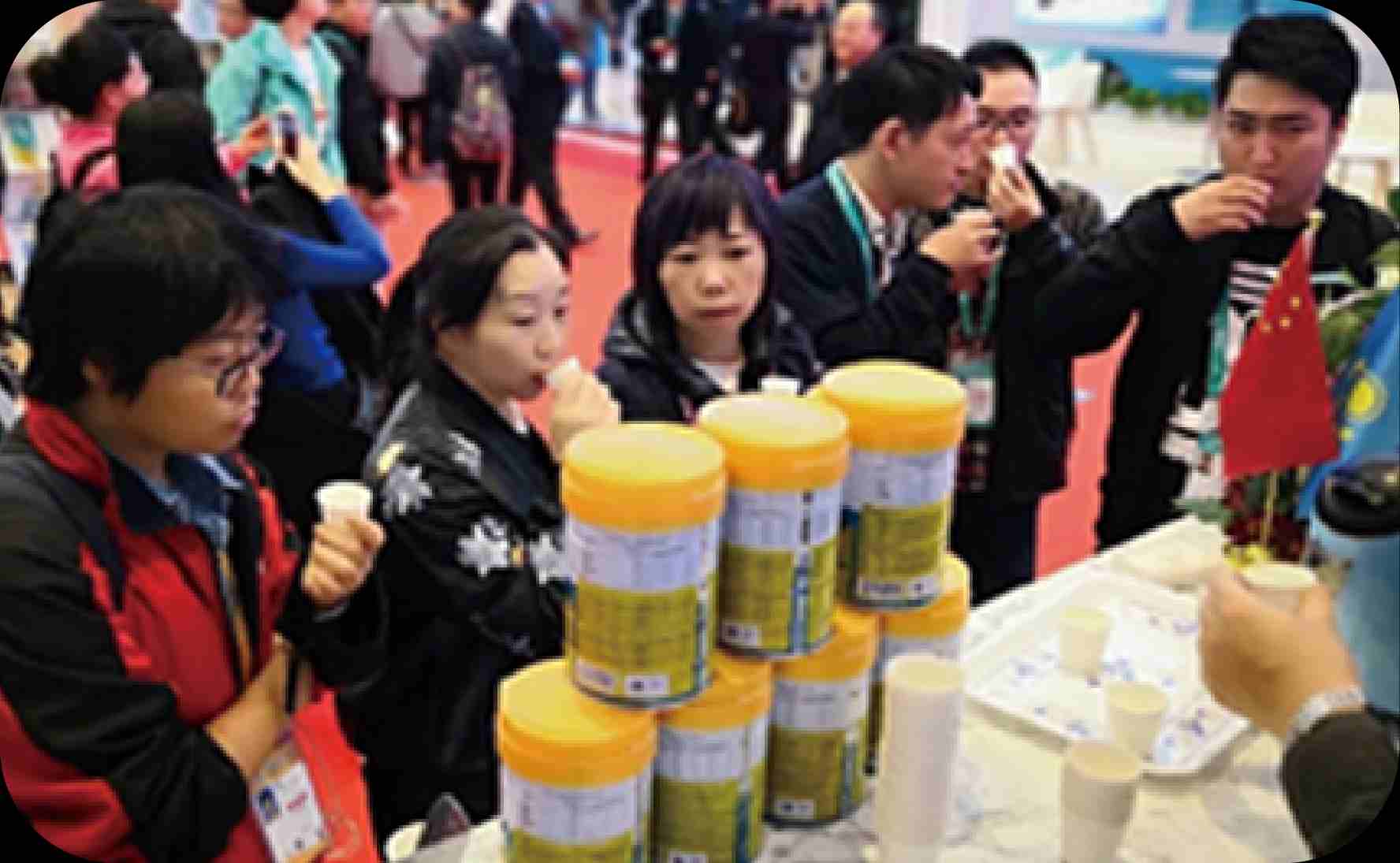
Golden Camel-Kazakhstan's National Gift - Stands Ready to Shine on the Global Stage!
On November 5,2019,at the 2nd China International CUE ctoac Doised to showcase its meticulously prepared pure camel milk powder from Kazakhstan. The product earned high praise from Dr. Bernard Vallat, Director-General of the World Or ganisation for Animal Health (OlE), while Deputy Minister of Agriculture of Kazakhstan, Ms. lsayeva, officially en dorsed the national brand "Golden Camel" camel milk powder!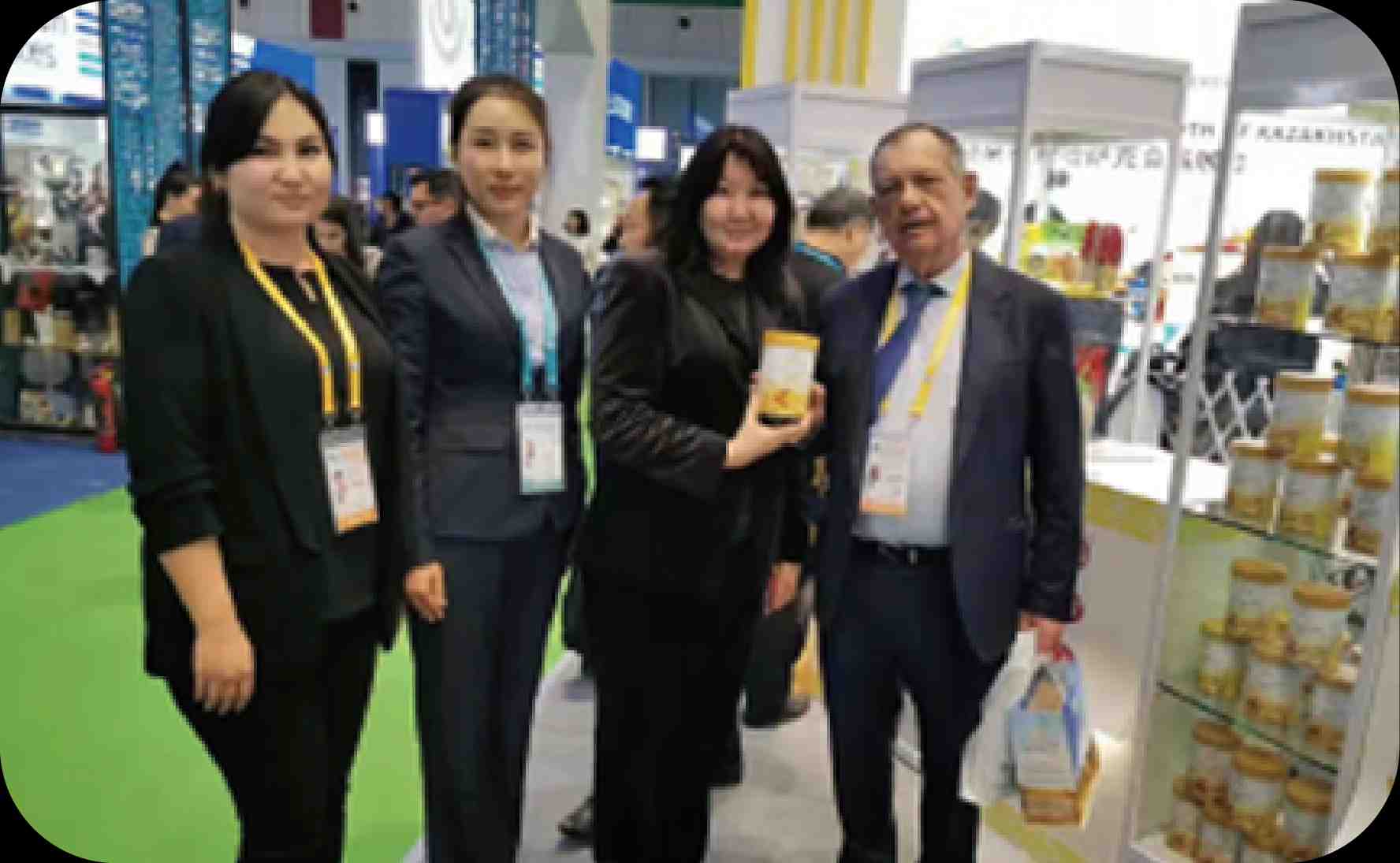
Golden Camel Keeps lts Promise:Third CllE Appearance Marks Deals with 7 in-ternational Enterprises
Riding the CllE Wave,Golden Camel Deepens ChinaMarket CommitmentBacked by a suite of internationalcertifications-HACCP Food Safety System, lSO9001 Qual-ityManagement,EurasianEconomic UnionExportLicense,and Antibiotic Residue-Free Verification-Goldenstatus as the brand leverages the China InterationalImport Expo's (CllE) global influence to expand its foot.print in the world's largest consumer market.
Golden Camel Shines as a Veteran CllE Exhibi-tor and Crowd Favorite!
At the 4th China International lmport Expo (ClE), 26 Kazakhstani enterprises showcased their products. Amongthem, Golden Camel Group-representing Kazakhstan'sdairy industry-arrived on schedule with a diverse portfo-lio: Whole Camel Milk Powder, Partially Skimmed CamelMilk Powder,Canned Liquid Camel Milk, and Stick-PackCamel Milk Powder.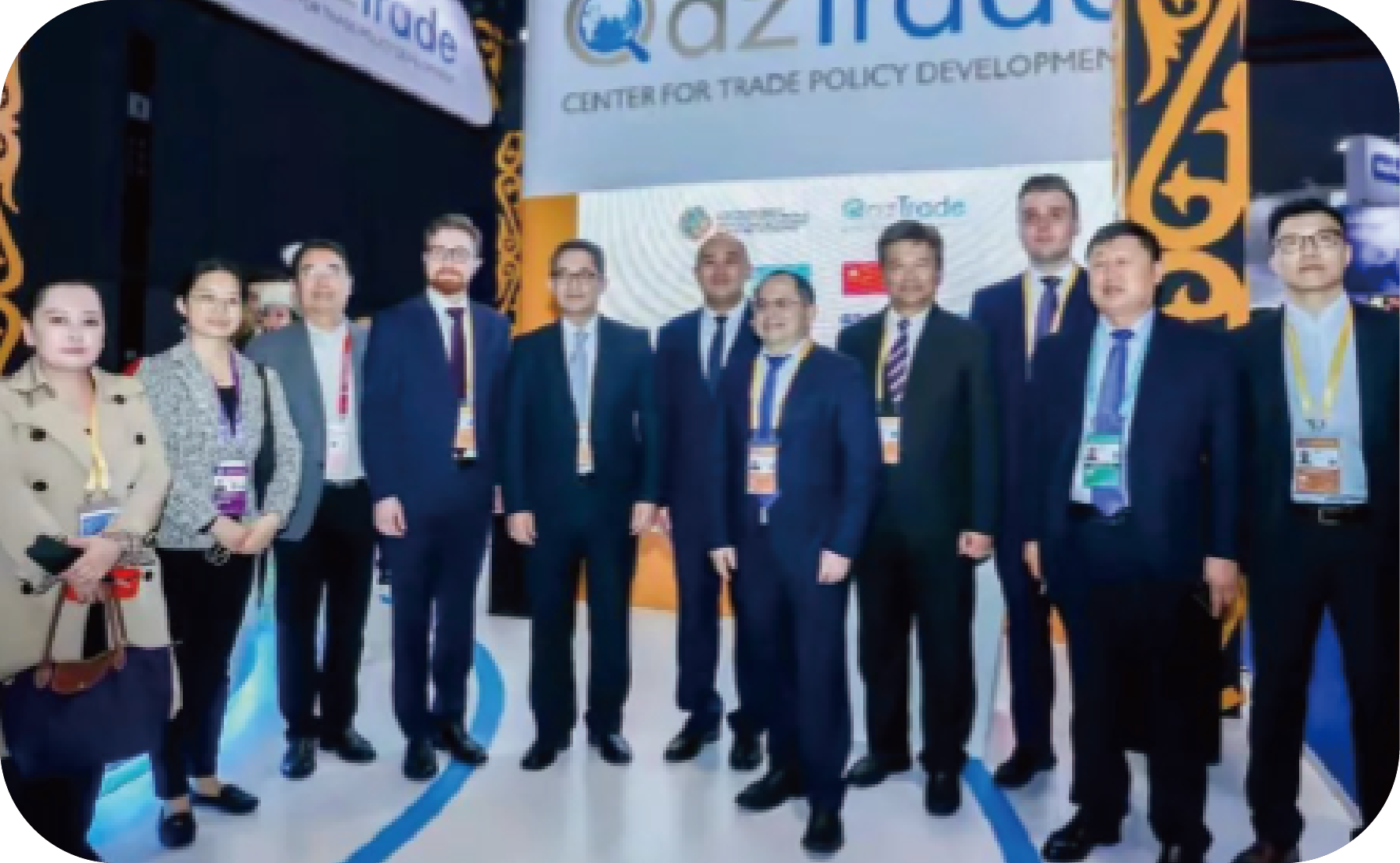
Golden Camel Stuns Again at the 5th china in-ternational lmport Expo (CllE) in Shanghai
As a five-time participant and veteran of the China International lmport Expo (CllE), Golden Camel has borne wit.ness to the event's remarkable evolution. Once again, thebrand's camel milk powder stole the spotlight with its pre.mium quality,rich aroma, velvety texture, and nutrientdensity-a testament to its enduring appeal as a globaldairy innovator.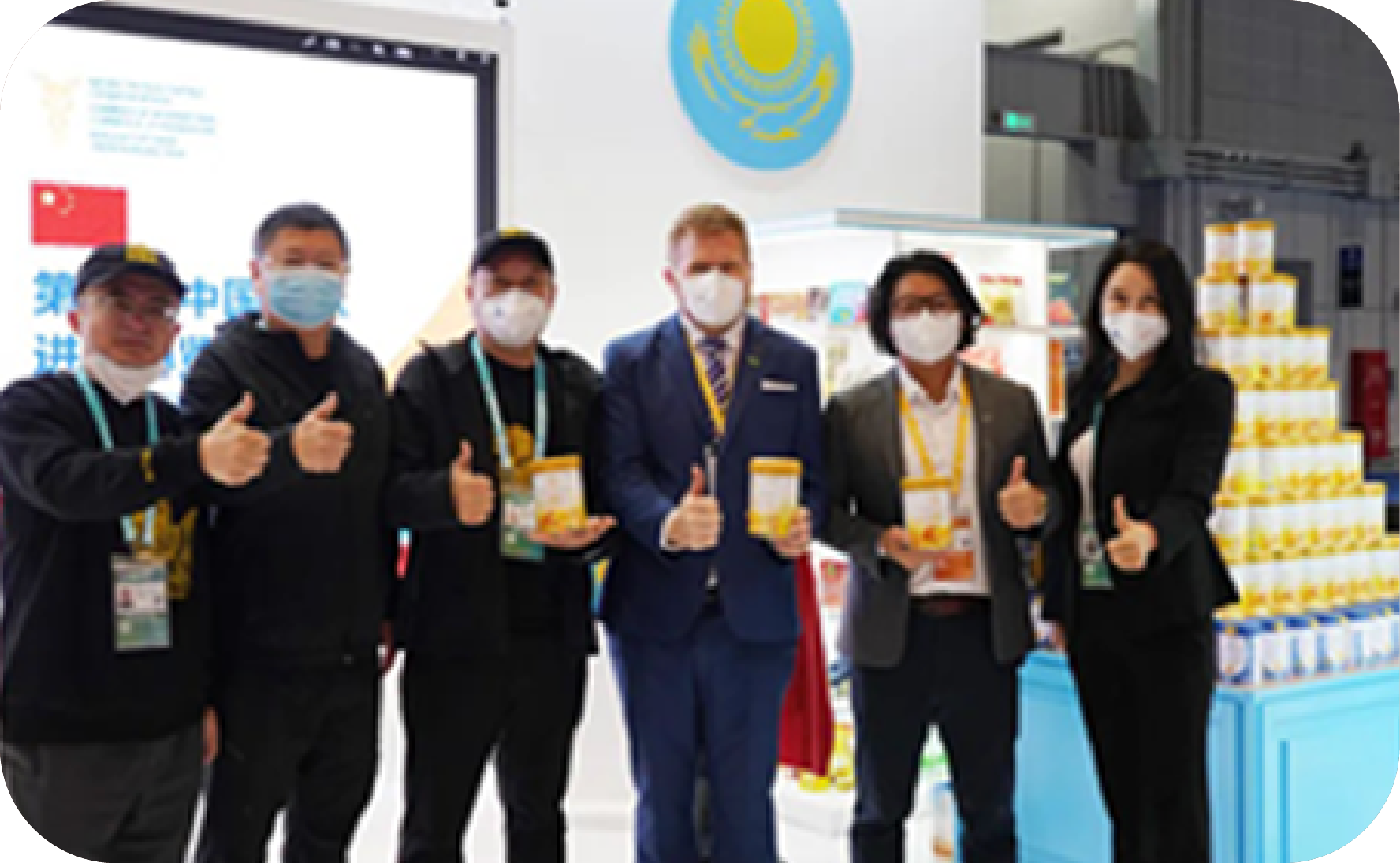
Golden Camel's Sixth CllE Appearance: A Dazzling Star!
As a veteran enterprise of the China International lmportExpo (CllE), Golden Camel once again took center stage,mesmerizing global audiences with its distinctive productallure. Stealing the spotlight were its Whole Camel MilkPowder (300g) and Pure Whole Camel Milk Powder (225gPortable Pack)-testaments to the brand's commitmentto quality and innovation.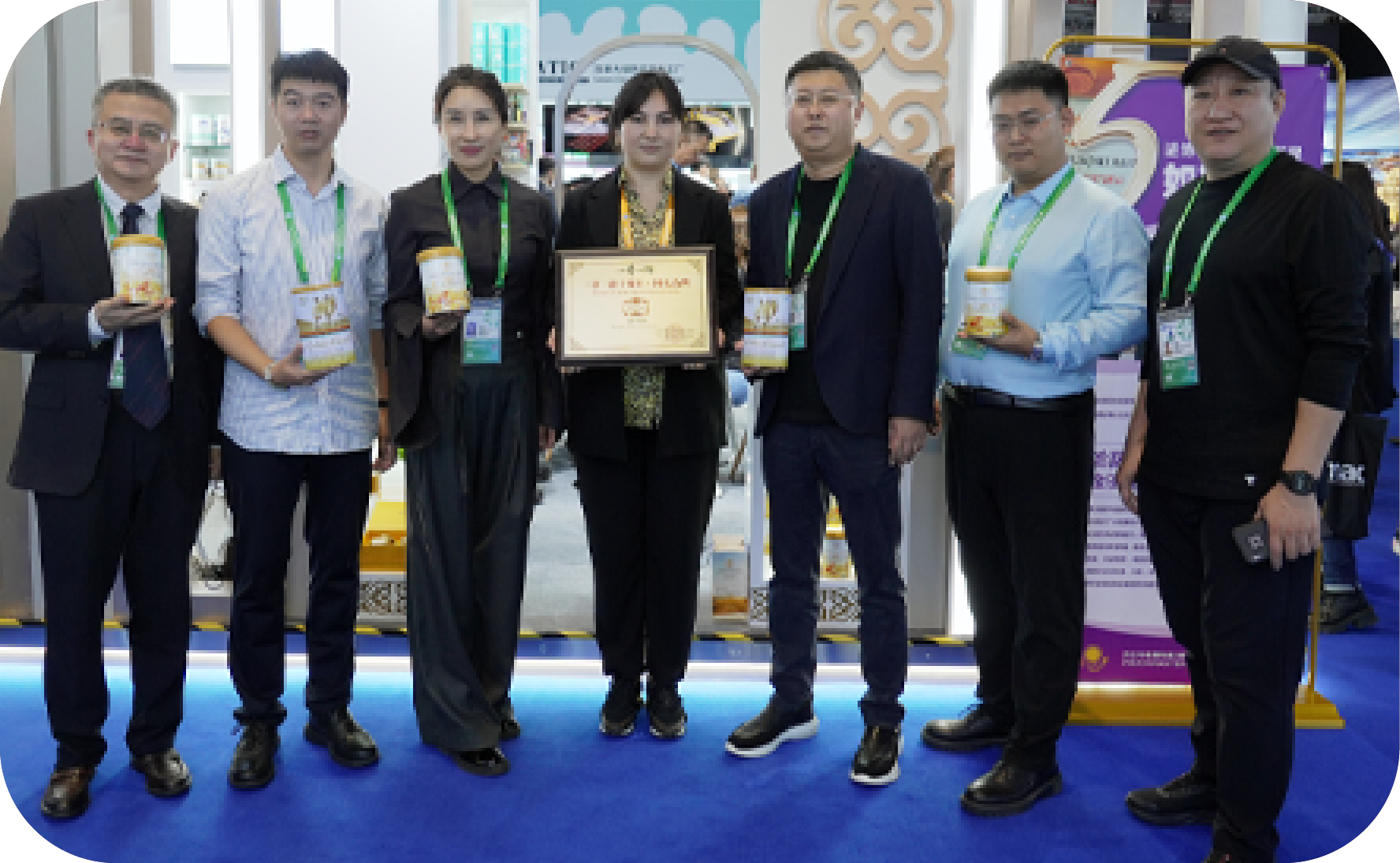
7th China International lmport Expo (CllE):Golden Camel's Star Products Steal the Limelight
During the China International lmport Expo (CllE), OrientShopping Channel arrived at the venue to deliver a com-prehensive live-streaming promotion of Golden CamelGroup's camel milk products.In the broadcast, the host elaborated on the health bene-fits and consumption methods of camel milk, while con-ducting a live brewing demonstration to give audiences afirsthand glimpse of the product's unique qualities. Thisinteractive approach allowed viewers to visually experi-ence the product's appeal in real-time.






